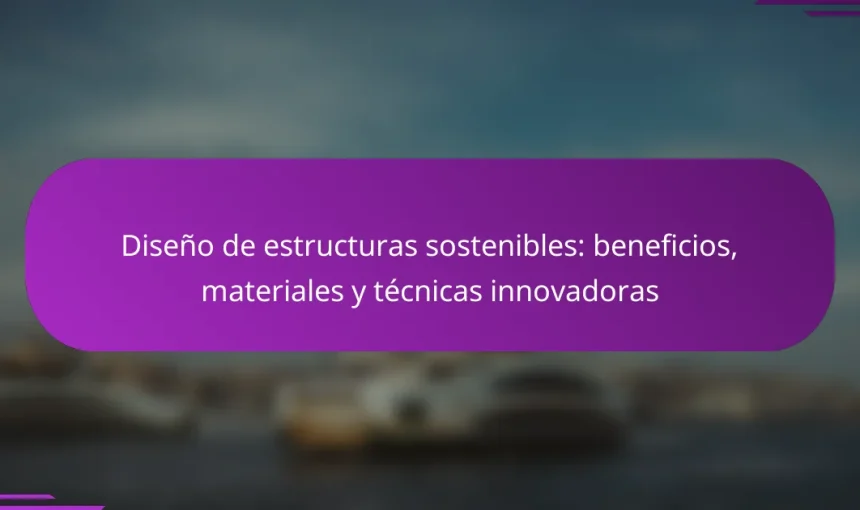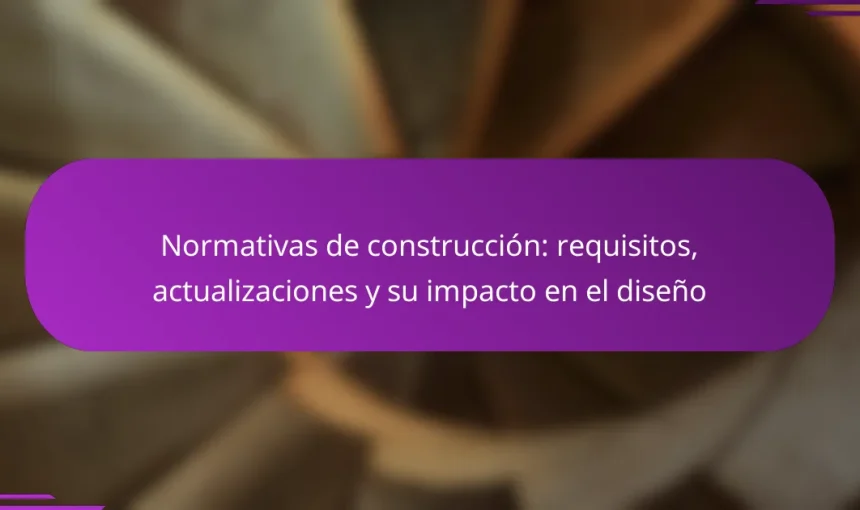The article focuses on bridge design, encompassing the planning and creation of structures that facilitate passage over obstacles such as rivers and roads. Key aspects include material selection, load analysis, environmental considerations, safety regulations, and aesthetic appeal. The challenges engineers face involve ensuring durability, assessing site geology, and adhering to budget and timeline constraints. Innovations […]
¿Qué es el diseño de estructuras sostenibles? El diseño de estructuras sostenibles es un enfoque arquitectónico que busca minimizar el impacto ambiental. Este tipo de diseño utiliza materiales ecológicos y técnicas de construcción que reducen el consumo de energía. Además, promueve el uso de recursos renovables y la eficiencia energética. La implementación de sistemas de […]
Construction regulations are a set of rules and standards governing the design, construction, and usage of buildings, ensuring the safety, health, and well-being of occupants and the public. These regulations vary by region and encompass building codes, environmental regulations, and accessibility requirements, often emphasizing sustainability and energy efficiency. The article explores how construction regulations are […]
Sustainable structure design is an architectural approach aimed at minimizing environmental impact through the use of eco-friendly materials and energy-efficient construction techniques. Key sustainable materials include certified wood, bamboo, recycled concrete, and recycled steel, all of which contribute to reducing carbon footprints and promoting resource efficiency. Innovative techniques such as modular construction, parametric design, and […]
Bioclimatic architecture is a design approach that integrates the climatic conditions of the environment into building construction, utilizing natural resources to enhance thermal comfort and reduce energy consumption. Key principles include building orientation, natural ventilation, and the use of appropriate materials, which can lead to energy savings of up to 50% compared to traditional buildings. […]
The analysis of loads in structures is a critical process that evaluates the forces and moments acting on buildings and bridges, ensuring their safety and stability. This analysis encompasses both static loads, such as material weight, and dynamic loads, including wind and seismic activity. Engineers employ specific calculation methods grounded in mechanics to assess how […]
The article focuses on the use of software in structural design, emphasizing the application of computer programs that enable engineers to create and analyze structures such as buildings and bridges. Key functionalities discussed include 3D modeling, structural analysis, and automated generation of technical documentation. The article also highlights current trends, such as the adoption of […]
¿Qué es el diseño de puentes? El diseño de puentes es el proceso de planificación y creación de estructuras que permiten el paso sobre obstáculos como ríos o carreteras. Este proceso incluye la selección de materiales, el análisis de cargas y la consideración de factores ambientales. Los ingenieros deben asegurarse de que los puentes sean […]
¿Qué es la construcción modular? La construcción modular es un método de edificación que utiliza módulos prefabricados. Estos módulos son secciones completas de una estructura construidas en fábricas. Luego, se transportan al sitio de construcción para su ensamblaje. Este enfoque permite una construcción más rápida y eficiente. Además, reduce los residuos y costos de materiales. […]
Modular construction is a building method that employs prefabricated modules manufactured in a factory and transported to the construction site for assembly. This approach significantly reduces construction time and costs while enhancing sustainability compared to traditional methods. Key processes involved in modular construction include prefabrication, on-site assembly, and the use of advanced manufacturing technologies, which […]






